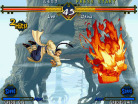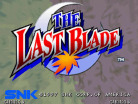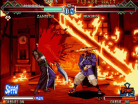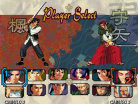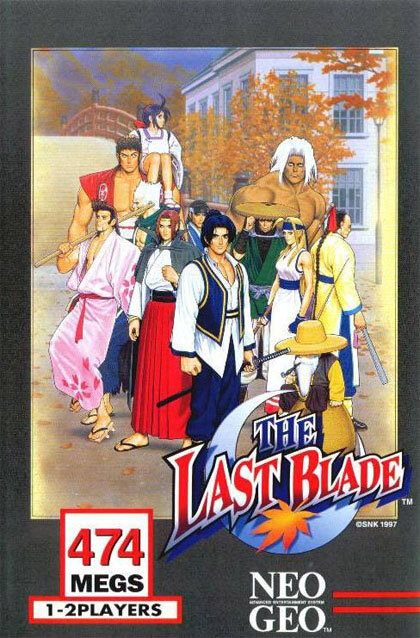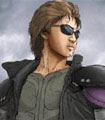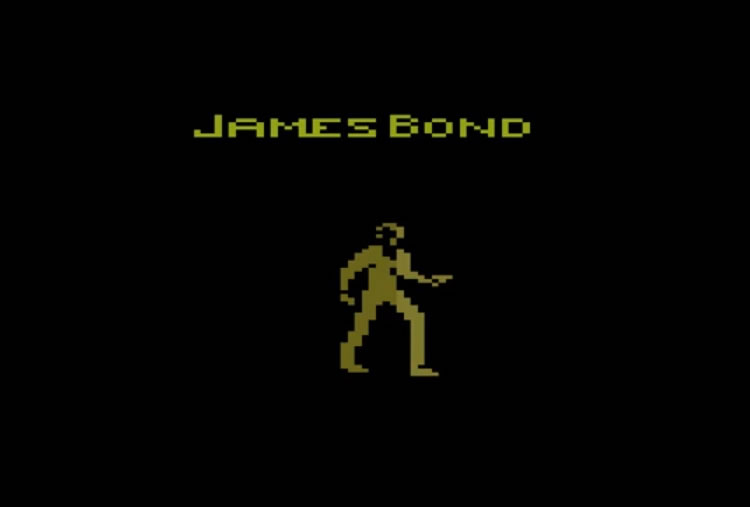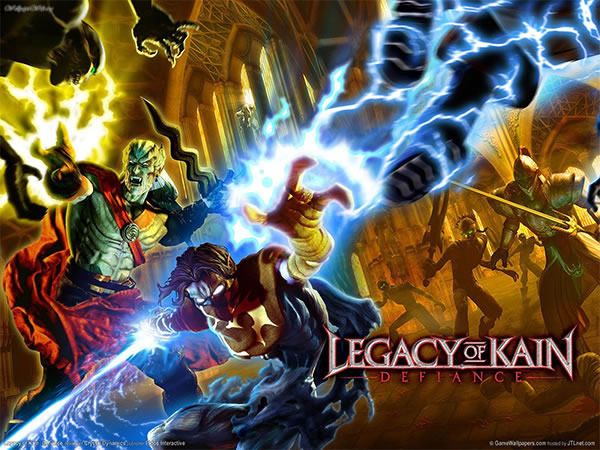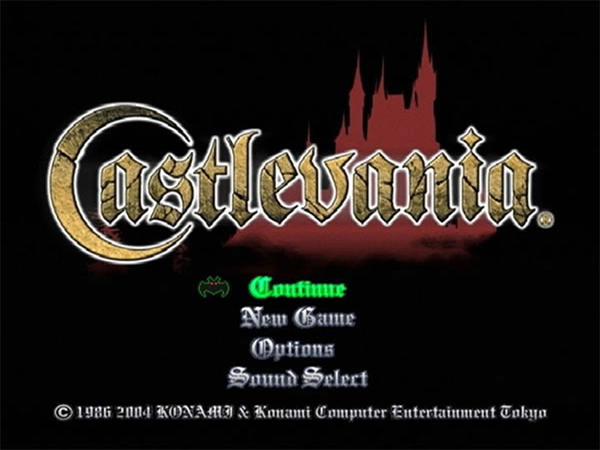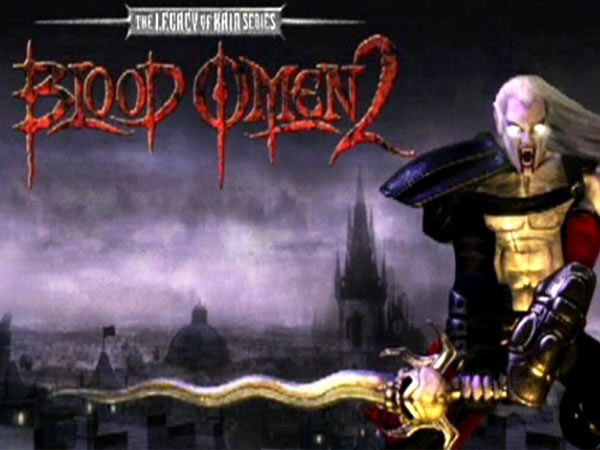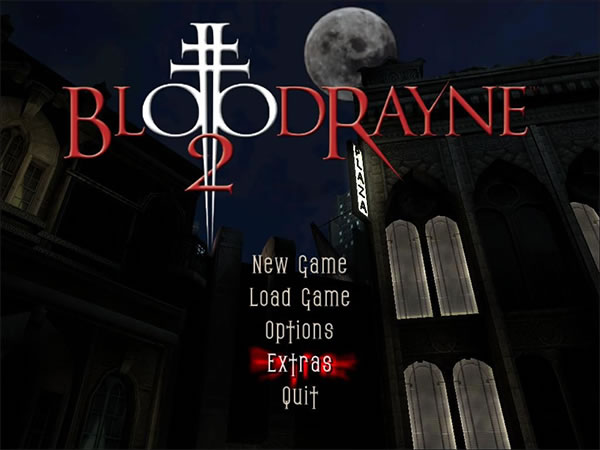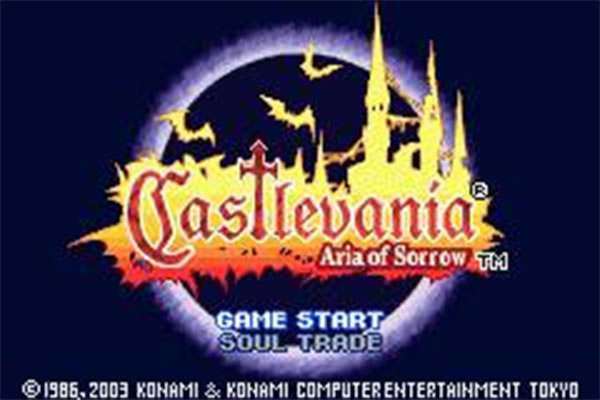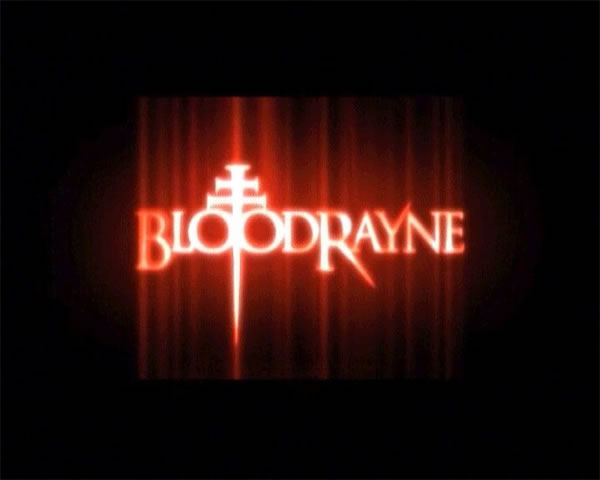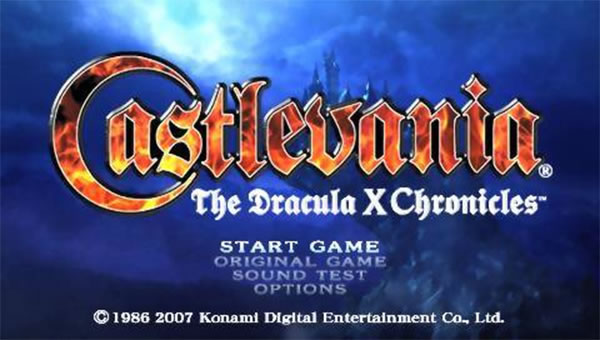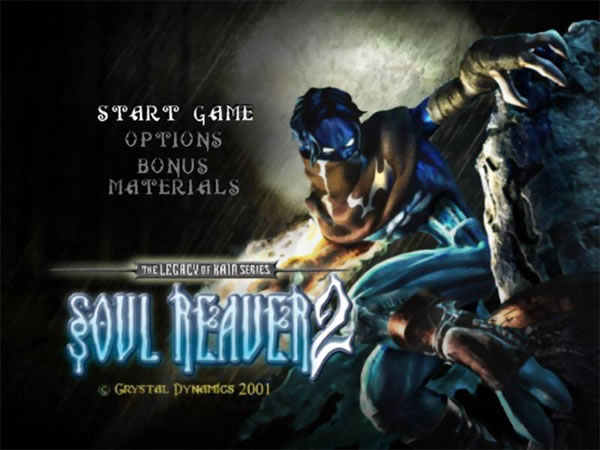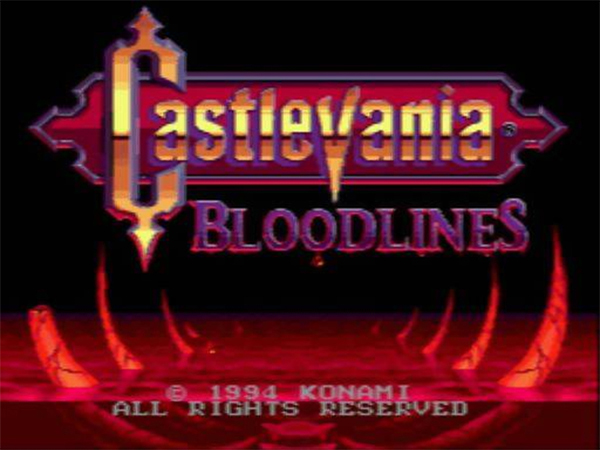- CLASSIC MAGAZINES
- REVIEW CREW
A show recapping what critics thought back
when classic games first came out! - NEXT GENERATION'S BEST & WORST
From the worst 1-star reviews to the best
5-stars can offer, this is Next Generation! - NINTENDO POWER (ARCHIVE)
Experience a variety of shows looking at the
often baffling history of Nintendo Power! - MAGAZINE RETROSPECTIVE
We're looking at the absolutely true history of
some of the most iconic game magazines ever! - SUPER PLAY'S TOP 600
The longest and most ambitious Super NES
countdown on the internet! - THEY SAID WHAT?
Debunking predictions and gossip found
in classic video game magazines! - NEXT GENERATION UNCOVERED
Cyril is back in this spin-off series, featuring the
cover critic review the art of Next Generation! - HARDCORE GAMER MAGAZING (PDF ISSUES)
Download all 36 issues of Hardcore Gamer
Magazine and relive the fun in PDF form!
- REVIEW CREW
- ELECTRONIC GAMING MONTHLY
- ELECTRONIC GAMING MONTHLY RANKS
From Mario to Sonic to Street Fighter, EGM
ranks classic game franchises and consoles! - ELECTRONIC GAMING MONTHLY BEST & WORST
Counting down EGM’s best and worst reviews
going year by year, from 1989 – 2009! - ELECTRONIC GAMING BEST & WORST AWARDS
11-part video series chronicling the ups and
downs of EGM’s Best & Worst Awards!
- ELECTRONIC GAMING MONTHLY RANKS
- GAME HISTORY
- GAME OVER: STORY BREAKDOWNS
Long-running series breaking down game
stories and analyzing their endings! - A BRIEF HISTORY OF GAMING w/ [NAME HERE]
Real history presented in a fun and pithy
format from a variety of game historians! - THE BLACK SHEEP
A series looking back at the black sheep
entries in popular game franchises! - INSTANT EXPERT
Everything you could possibly want to know
about a wide variety of gaming topics! - FREEZE FRAME
When something familiar happens in the games
industry, we're there to take a picture! - I'VE GOT YOUR NUMBER
Learn real video game history through a series
of number-themed episodes, starting at zero! - GREAT MOMENTS IN BAD ACTING
A joyous celebration of some of gaming's
absolute worst voice acting!
- GAME OVER: STORY BREAKDOWNS
- POPULAR SHOWS
- DG NEWS w/ LORNE RISELEY
Newsman Lorne Riseley hosts a regular
series looking at the hottest gaming news! - REVIEW REWIND
Cyril replays a game he reviewed 10+ years
ago to see if he got it right or wrong! - ON-RUNNING FEUDS
Defunct Games' longest-running show, with
editorials, observations and other fun oddities! - DEFUNCT GAMES QUIZ (ARCHIVE)
From online quizzes to game shows, we're
putting your video game knowledge to the test!- QUIZ: ONLINE PASS
Take a weekly quiz to see how well you know
the news and current gaming events! - QUIZ: KNOW THE GAME
One-on-one quiz show where contestants
find out if they actually know classic games! - QUIZ: THE LEADERBOARD
Can you guess the game based on the classic
review? Find out with The Leaderboard!
- QUIZ: ONLINE PASS
- DEFUNCT GAMES VS.
Cyril and the Defunct Games staff isn't afraid
to choose their favorite games and more! - CYRIL READS WORLDS OF POWER
Defunct Games recreates classic game
novelizations through the audio book format!
- DG NEWS w/ LORNE RISELEY
- COMEDY
- GAME EXPECTANCY
How long will your favorite hero live? We crunch
the numbers in this series about dying! - VIDEO GAME ADVICE
Famous game characters answer real personal
advice questions with a humorous slant! - FAKE GAMES: GUERILLA SCRAPBOOK
A long-running series about fake games and
the people who love them (covers included)! - WORST GAME EVER
A contest that attempts to create the worst
video game ever made, complete with covers! - LEVEL 1 STORIES
Literature based on the first stages of some
of your favorite classic video games! - THE COVER CRITIC
One of Defunct Games' earliest shows, Cover
Critic digs up some of the worst box art ever! - COMMERCIAL BREAK
Take a trip through some of the best and
worst video game advertisements of all time! - COMIC BOOK MODS
You've never seen comics like this before.
A curious mix of rewritten video game comics!
- GAME EXPECTANCY
- SERIES ARCHIVE
- NINTENDO SWITCH ONLINE ARCHIVE
A regularly-updated list of every Nintendo
Switch Online release, plus links to review! - PLAYSTATION PLUS CLASSIC ARCHIVE
A comprehensive list of every PlayStation
Plus classic release, including links! - RETRO-BIT PUBLISHING ARCHIVE
A regularly-updated list of every Retro-Bit
game released! - REVIEW MARATHONS w/ ADAM WALLACE
Join critic Adam Wallace as he takes us on a
classic review marathon with different themes!- DEFUNCT GAMES GOLF CLUB
Adam Wallace takes to the links to slice his way
through 72 classic golf game reviews! - 007 IN PIXELS
Adam Wallace takes on the world's greatest spy
as he reviews 15 weeks of James Bond games! - A SALUTE TO VAMPIRES
Adam Wallace is sinking his teeth into a series
covering Castlevania, BloodRayne and more! - CAPCOM'S CURSE
Adam Wallace is celebrating 13 days of Halloween
with a line-up of Capcom's scariest games! - THE FALL OF SUPERMAN
Adam Wallace is a man of steel for playing
some of the absolute worst Superman games! - THE 31 GAMES OF HALLOWEEN
Adam Wallace spends every day of October afraid
as he reviews some of the scariest games ever! - 12 WEEKS OF STAR TREK
Adam Wallace boldly goes where no critic has
gone before in this Star Trek marathon!
- DEFUNCT GAMES GOLF CLUB
- DAYS OF CHRISTMAS (ARCHIVE)
Annual holiday series with themed-episodes
that date all the way back to 2001!- 2015: 30 Ridiculous Retro Rumors
- 2014: 29 Magazines of Christmas
- 2013: 29 Questionable Power-Ups of Christmas
- 2012: 34 Theme Songs of Christmas
- 2011: 32 Game Endings of Christmas
- 2010: 31 Bonus Levels of Christmas
- 2009: 30 Genres of Christmas
- 2008: 29 Controls of Christmas
- 2007: 34 Cliches of Christmas
- 2006: 33 Consoles of Christmas
- 2005: 32 Articles of Christmas
- 2004: 31 Websites of Christmas
- 2003: 29 Issues of Christmas
- 2002: 28 Years of Christmas
- 2001: 33 Days of Christmas
- NINTENDO SWITCH ONLINE ARCHIVE
- REVIEW ARCHIVE
- FULL ARCHIVE
The Last Blade
If you weren't paying close attention to SNK's activities, you'd assume that The Last Blade was some sort of Samurai Showdown sequel, what with all these ninjas and swords and whatnot. Admittedly there are similarities and it is fair to say that The Last Blade is a 'spiritual' successor to Samurai Showdown, but it's best to view them as separate entities, otherwise things will get very confusing. The Last Blade is set around the end of the 19th century in Japan, often called the 'Bakumatsu' period, which is better known for the Western invasion of the East and the introduction of guns to a society accustomed to the use of swords for warfare. You know, like in the title 'The Last Blade'. Who said video games weren't educational?
SNK do a great job of exploiting this setting to its fullest, with a cast of well drawn-out characters and rich, colourful backgrounds. Kaede is the central character, with his nemesis and ex-training partner Moriya providing the Kyo - Iori type relationship we see in King of Fighters. Moriya is the mis-understood kinda guy who keeps himself to himself and his fighting style is full of crescent sweeps and lighting-fast jabs. On the goody-two shoes side there's Kaede, who has the unique ability to transform himself into 'awakened Kaede' (press B+C+D together while your special meter is flashing) during which his hair turns from the regular black with pony tail to a gold / blonde mop top in a super-saiyan fashion, while his personality changes from a calm, thoughtful individual into a right jackass, cocky and arrogant. These two combatants have fighting styles that are worlds apart, yet considering they trained under the same master you'd think that they would share at least a few similarities. But SNK have never been ones to clone their characters (unlike a certain Street Fighter producing factory), and never has this fact been more welcome as the Last Blade contains a paltry 12 characters in total (not including the two boss characters).
On top of Kaede and Moriya we have Genbo no Okina, the turtle hermit, Yuki, female master of the halberd, Zanetsu, the ageing ninja, Shikyo, a drooling madman who is excellent at long-range attacks, Washizuka, the government official (in pursuit of Shikyo), Shigen, the walking mound of muscle with a stone hand, Juzoh, who wields a club like a baseball bat, Akari, the school girl turned master of demons, Amano, who's skill with the staff still doesn't make up for the fact that he wears a pink kimono, and finally my personal favorite Lee Rekka. Lee Rekka bares a startling resemblance to Jet Li's interpretation of the legendary Wong Fei Hung from the 'Once Upon a Time in China' series of films. He even has his trusty fan (which is used as a weapon) and, of course, the 'no shadow kick', perhaps the most infamous technique in Wong Fei Hung's repertoire. The majority of The Last Blade's characters are based around some kind of legend or real person, which makes them all the more interesting. The plot, also, has its roots in mythology. Sadly the introduction text has not been translated from the original Japanese, although I can tell you that the plot revolves around 'Hell's Gate' (self explanatory, really), which is protected by four guardians each represented by a god (a tiger, a turtle and the other two...probably a dragon in there). One of these guardians is bit bitter and twisted, so he decides open Hell's Gate and, you know, do evil things. The other guardians are obviously a mite annoyed at this, so they decide to go after him and perform some ritual to close Hell's Gate, which involves a 'Sealing Maiden', who must take all her clothes off (hey, every good ritual needs a naked chick!). The story isn't exactly The Last Blade's strong point, but it does hold together, even with SNK's typically poor translation skills.
The backgrounds are a real highlight. Take Moriya's stage for example. Here the bamboo trees sway violently in a gale, while the moon occasionally reveals itself from behind the clouds to light up the arena with a gentle glow. Kaede's stage, set in a courtyard, features autumn leaves that kick up from under the combatant's feet. Zanetsu fights in the cargo hold of a ship at sea where the whole stage sways up and down with motion of the waves. Yuki's stage is perhaps the most fun, being covered in ice. Hit an opponent to the ground and the ground and the ice cracks slightly. Do it again in the same spot and it breaks completely, revealing the ground below. You can also spot snow falling in large chunks from the rooftop in the background, while the third round (if you ever get there) is party to heavy snowstorm. The attention to detail is astonishing, as is the atmosphere it creates. These hand-drawn masterpieces have more personality than any 3D counterpart you care to mention, which is quite a feat from SNK considering this game is over 5 years old now.
The gameplay also shares a similar distinction. Each character has a choice of two modes, power and speed. Unlike Samurai Showdown's evil/good variations, power and speed modes are all that they pretend to be - one offers better speed and combo opportunities while the other increases the player's power and special move abilities. This is nothing revolutionary, but does offer two distinct fighting styles for the player to experiment with, which obviously increases depth. The button layout uses three types of attack - weak/fast (A), strong/slow (B) and kick (C) which leaves the D button free for a special function. This is the 'repel' button, which similar to a counter attack, yet here it is even more useful than in any other game with an equivalent feature. Not only does it stop your opponent from striking you, it knocks them back and raises their weapon creating more than enough time for you to attack them in return. Once you get accustomed to timing your repel attacks it becomes second nature, and the whole game falls into place. What once appeared to be a Samurai Showdown clone with nicer graphics and a couple of gimmicks suddenly becomes its superior in almost every way. This, of course, is subject to opinion. I love the Samurai Showdown series a lot, but I just think that this game is everything Samurai Showdown 5 should have been, and more. The characters are amongst the best in SNK's already rich repertoire, the animation and backgrounds are second to none and the gameplay is unique and has unparalleled depth. What more could you want? There is a sequel, which is just as good, but not particularly better. It does add a few new characters (I especially like the addition of Setsuna - nice and evil!), but the backgrounds aren't quite as nicely executed and there aren't as many of them. Plus, the plot is twice as confusing and the boss twice as cheap...all of which leads me to a personal preference for the original. Still, they are so similar that you can't go wrong with either version - they are probably the best 2D fighting games you'll ever play. And, hey, I like 2D better!
SNK do a great job of exploiting this setting to its fullest, with a cast of well drawn-out characters and rich, colourful backgrounds. Kaede is the central character, with his nemesis and ex-training partner Moriya providing the Kyo - Iori type relationship we see in King of Fighters. Moriya is the mis-understood kinda guy who keeps himself to himself and his fighting style is full of crescent sweeps and lighting-fast jabs. On the goody-two shoes side there's Kaede, who has the unique ability to transform himself into 'awakened Kaede' (press B+C+D together while your special meter is flashing) during which his hair turns from the regular black with pony tail to a gold / blonde mop top in a super-saiyan fashion, while his personality changes from a calm, thoughtful individual into a right jackass, cocky and arrogant. These two combatants have fighting styles that are worlds apart, yet considering they trained under the same master you'd think that they would share at least a few similarities. But SNK have never been ones to clone their characters (unlike a certain Street Fighter producing factory), and never has this fact been more welcome as the Last Blade contains a paltry 12 characters in total (not including the two boss characters).
On top of Kaede and Moriya we have Genbo no Okina, the turtle hermit, Yuki, female master of the halberd, Zanetsu, the ageing ninja, Shikyo, a drooling madman who is excellent at long-range attacks, Washizuka, the government official (in pursuit of Shikyo), Shigen, the walking mound of muscle with a stone hand, Juzoh, who wields a club like a baseball bat, Akari, the school girl turned master of demons, Amano, who's skill with the staff still doesn't make up for the fact that he wears a pink kimono, and finally my personal favorite Lee Rekka. Lee Rekka bares a startling resemblance to Jet Li's interpretation of the legendary Wong Fei Hung from the 'Once Upon a Time in China' series of films. He even has his trusty fan (which is used as a weapon) and, of course, the 'no shadow kick', perhaps the most infamous technique in Wong Fei Hung's repertoire. The majority of The Last Blade's characters are based around some kind of legend or real person, which makes them all the more interesting. The plot, also, has its roots in mythology. Sadly the introduction text has not been translated from the original Japanese, although I can tell you that the plot revolves around 'Hell's Gate' (self explanatory, really), which is protected by four guardians each represented by a god (a tiger, a turtle and the other two...probably a dragon in there). One of these guardians is bit bitter and twisted, so he decides open Hell's Gate and, you know, do evil things. The other guardians are obviously a mite annoyed at this, so they decide to go after him and perform some ritual to close Hell's Gate, which involves a 'Sealing Maiden', who must take all her clothes off (hey, every good ritual needs a naked chick!). The story isn't exactly The Last Blade's strong point, but it does hold together, even with SNK's typically poor translation skills.
The backgrounds are a real highlight. Take Moriya's stage for example. Here the bamboo trees sway violently in a gale, while the moon occasionally reveals itself from behind the clouds to light up the arena with a gentle glow. Kaede's stage, set in a courtyard, features autumn leaves that kick up from under the combatant's feet. Zanetsu fights in the cargo hold of a ship at sea where the whole stage sways up and down with motion of the waves. Yuki's stage is perhaps the most fun, being covered in ice. Hit an opponent to the ground and the ground and the ice cracks slightly. Do it again in the same spot and it breaks completely, revealing the ground below. You can also spot snow falling in large chunks from the rooftop in the background, while the third round (if you ever get there) is party to heavy snowstorm. The attention to detail is astonishing, as is the atmosphere it creates. These hand-drawn masterpieces have more personality than any 3D counterpart you care to mention, which is quite a feat from SNK considering this game is over 5 years old now.
The gameplay also shares a similar distinction. Each character has a choice of two modes, power and speed. Unlike Samurai Showdown's evil/good variations, power and speed modes are all that they pretend to be - one offers better speed and combo opportunities while the other increases the player's power and special move abilities. This is nothing revolutionary, but does offer two distinct fighting styles for the player to experiment with, which obviously increases depth. The button layout uses three types of attack - weak/fast (A), strong/slow (B) and kick (C) which leaves the D button free for a special function. This is the 'repel' button, which similar to a counter attack, yet here it is even more useful than in any other game with an equivalent feature. Not only does it stop your opponent from striking you, it knocks them back and raises their weapon creating more than enough time for you to attack them in return. Once you get accustomed to timing your repel attacks it becomes second nature, and the whole game falls into place. What once appeared to be a Samurai Showdown clone with nicer graphics and a couple of gimmicks suddenly becomes its superior in almost every way. This, of course, is subject to opinion. I love the Samurai Showdown series a lot, but I just think that this game is everything Samurai Showdown 5 should have been, and more. The characters are amongst the best in SNK's already rich repertoire, the animation and backgrounds are second to none and the gameplay is unique and has unparalleled depth. What more could you want? There is a sequel, which is just as good, but not particularly better. It does add a few new characters (I especially like the addition of Setsuna - nice and evil!), but the backgrounds aren't quite as nicely executed and there aren't as many of them. Plus, the plot is twice as confusing and the boss twice as cheap...all of which leads me to a personal preference for the original. Still, they are so similar that you can't go wrong with either version - they are probably the best 2D fighting games you'll ever play. And, hey, I like 2D better!
HOME |
CONTACT |
NOW HIRING |
WHAT IS DEFUNCT GAMES? |
NINTENDO SWITCH ONLINE |
RETRO-BIT PUBLISHING
Retro-Bit |
Switch Planet |
The Halcyon Show |
Same Name, Different Game |
Dragnix |
Press the Buttons
Game Zone Online | Hardcore Gamer | The Dreamcast Junkyard | Video Game Blogger
Dr Strife | Games For Lunch | Mondo Cool Cast | Boxed Pixels | Sega CD Universe | Gaming Trend
Game Zone Online | Hardcore Gamer | The Dreamcast Junkyard | Video Game Blogger
Dr Strife | Games For Lunch | Mondo Cool Cast | Boxed Pixels | Sega CD Universe | Gaming Trend
Copyright © 2001-2024 Defunct Games
All rights reserved. All trademarks are properties of their respective owners.
All rights reserved. All trademarks are properties of their respective owners.






